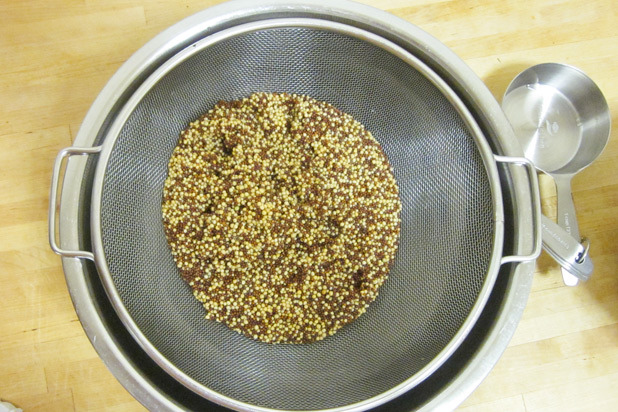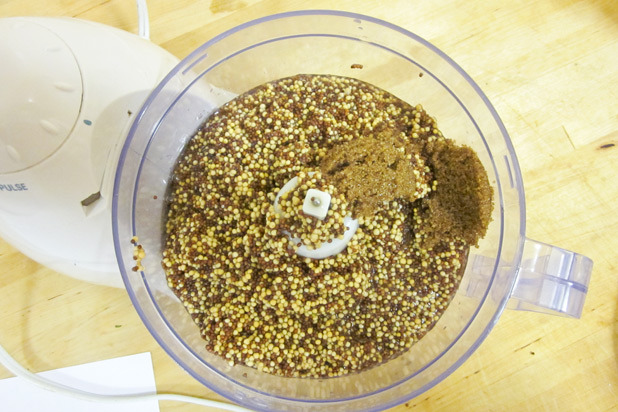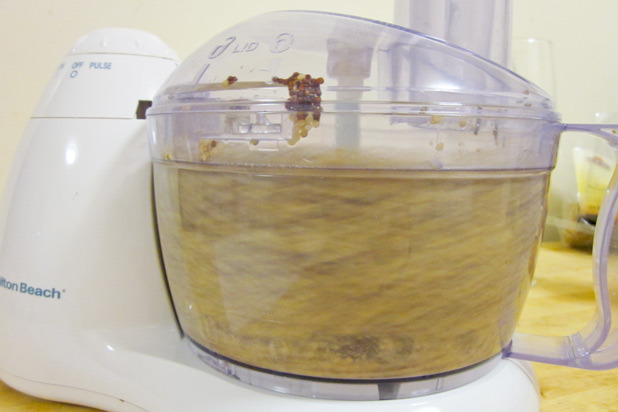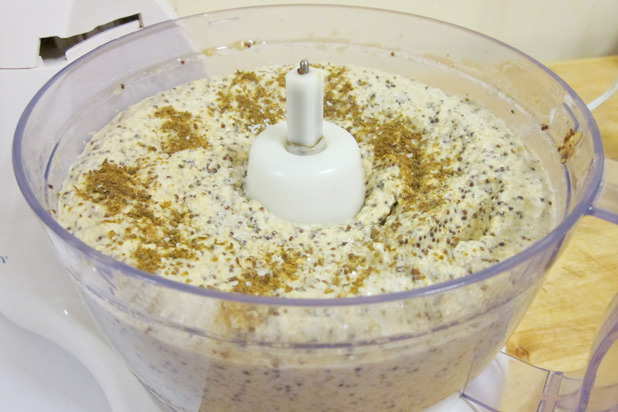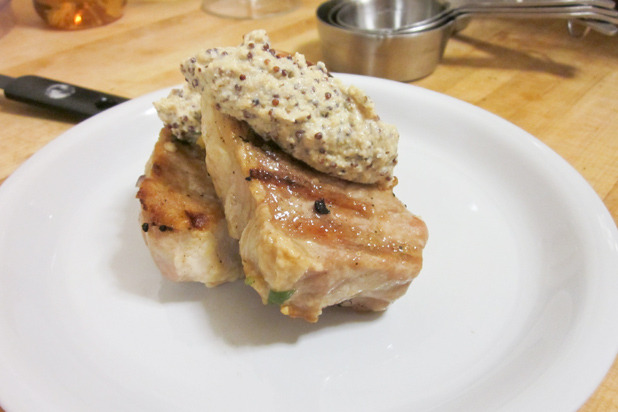How To Make Mustard Slideshow
But no matter what kind of mustard you're making, always soak the seeds first for 24 hours, says Love. This helps remove bitterness and softens the seeds, which obviates the need for cooking them. Exposing them to heat, he says, brings out the tannins and makes the mustard taste old. As a rule of thumb, always use a 2:1 ratio of cold water to seeds, and put a lid on it.
Drain the Seeds
The next day, drain the seeds in a relatively fine-meshed colander — if in doubt, try pushing one of the smaller seeds through a hole and if it doesn't slip through, you're good to go.
Add the Liquids and Sweeteners
Transfer the seeds to the bowl of a food processor or a blender. Add whatever liquids, purées, and sweeteners you're using — here, Love uses a bit of cider vinegar, white wine, and brown sugar, but feel free to use whatever you like. If you're experimenting, err on the side of caution and add just a little bit of whatever you're using. You can always add more if the paste is too thick.
Blend
Process until a smooth paste is formed.
Add the Seasonings
Add whatever herbs and spices you're using. At this point, Love adds cumin and salt. Process again until blended, and taste. Adjust seasoning as needed.
That's It
Your mustard is all set. Refrigerate overnight to let the flavors meld before using on your favorite foods.

